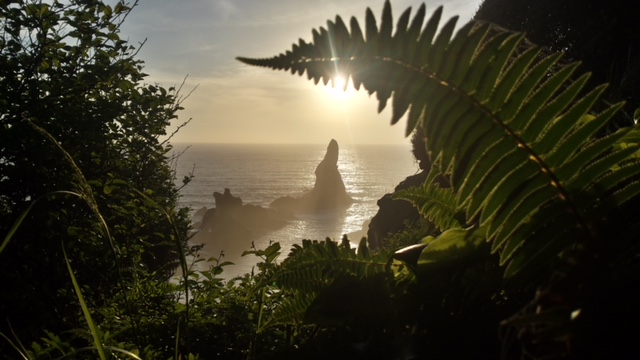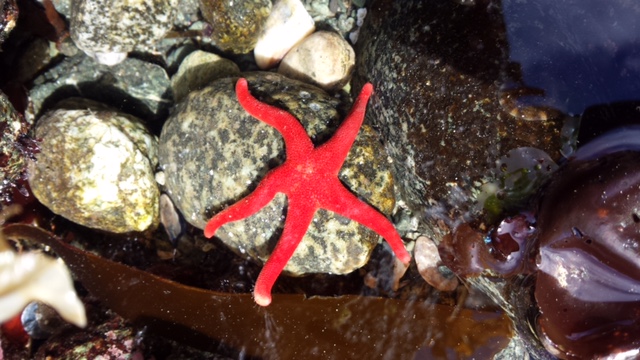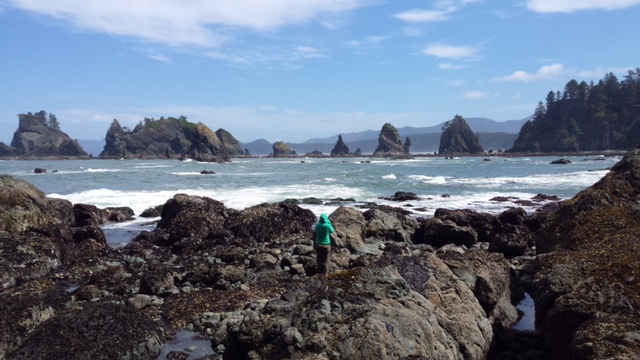
NPS Photo - A. Taylor
The Emerald State was gleaming as sunshine glinted off of the tops of verdant volcanic islands. Beneath one of those jutting towers was a crevassed world full of intertidal organisms. A ‘Cave of Wonders’ awaited us as we tiptoed and slipped our way across rocky boulder fields covered in thick rockweed. We passed by small invertebrates like carnivorous polychaete worms, rock crabs, beach fleas, Voznesensky’s kelp isopod, and endless sea anemones. But a more obvious and interesting group of organisms was showing up more and more… sea stars! And several species of sea stars at that. In fact, we found more sea stars than I have seen in my previous 3 years of working in the intertidal at Cabrillo: Six-legged Leptasterias hexactis, leathery and red Dermasterias imbricata, Purple/Orange/Brown Pisaster ochraceus, and brittle stars, all in abundance.
 NPS Photo - A. Taylor
NPS Photo - A. TaylorSo does this mean that sea stars are finally returning to the places they were first hit by disease? Does this mean that we might start seeing an influx of these bumpy and beautiful organisms once again? Are these species responding to a temporary reduction in water temperatures or is this a new crop of sea stars with resilience to the warm-ocean-loving virus? Well, NPS scientists and partners across the coast are continuing to inventory and monitor these communities with hopes to answer these questions. And new apps like iNauralist and platforms like seastarwasting.org give the power to our citizen scientists to monitor the rest of the coastline and show us what is out there.

NPS Photo - A. Taylor
